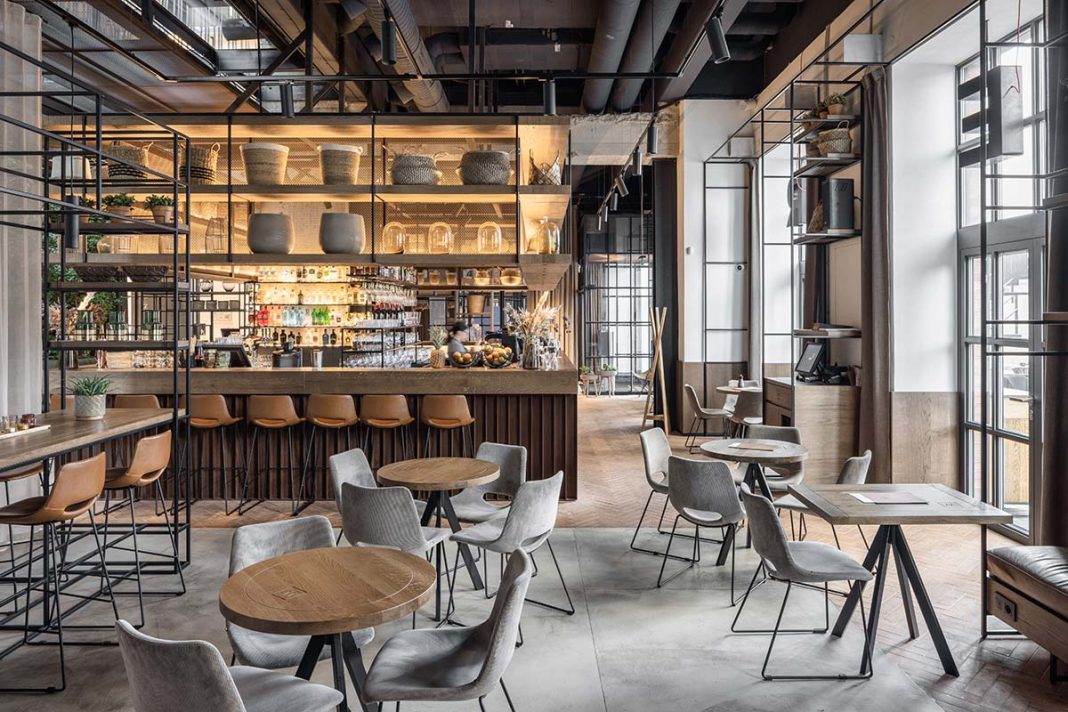DATA SHEET
Client: Medusa Restaurants
Architectural design: DF Creative Group
Interior design: Beef Architekti
Furnishings: custom designed; Pitoreska, Pedrali
Lighting: Molto Luce
Upholstery: Gidra
Brick floor: Terakota F-S
Photo credits: Matej Hakár
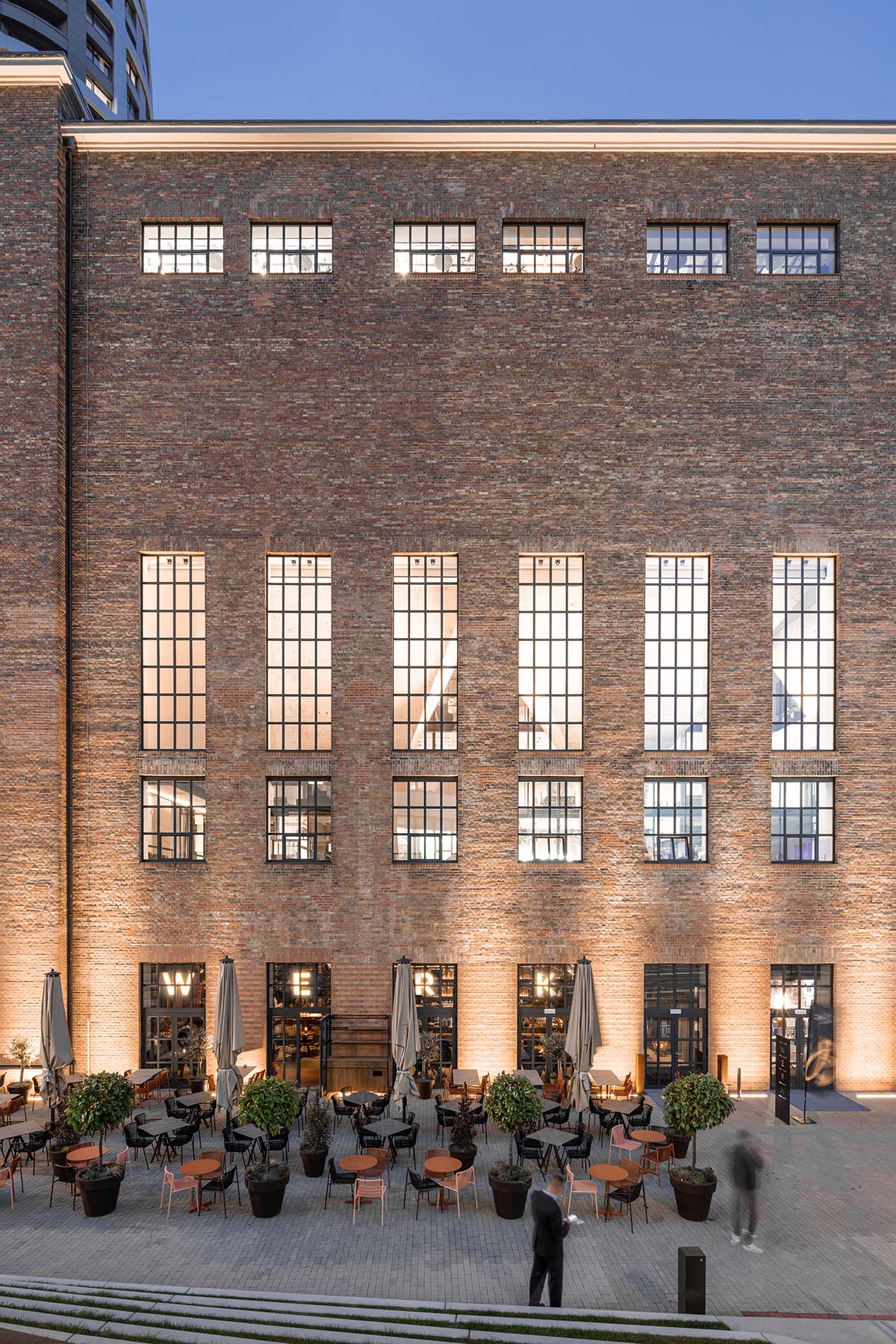
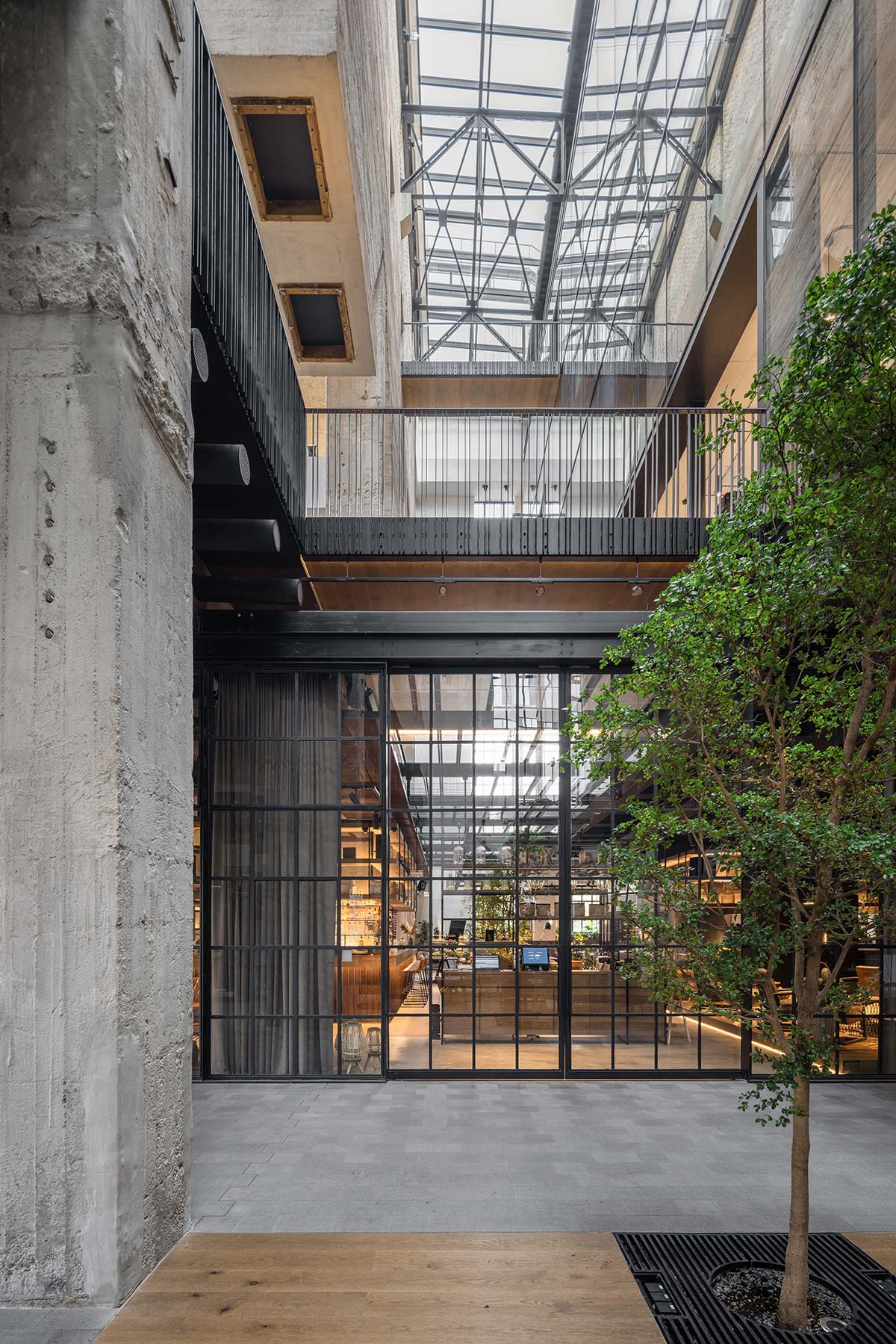
The lighted letters of Werk restaurant’s sign can be glimpsed through the façade openings, which is an appealing invitation to engage. Set in the former Jurkovič power plant, this piece of post-industrial architecture has been converted into a multi-purpose space and an unexpected catalyst of social interactions, both for those working inside and those coming from the outside.
The designers of Beef Architekti were in charge of its concept design and chose to create a central element for its numerous uses: offices, co-working space, a multi-purpose room, and gallery for cultural events. They also made key use of contact with the outdoors – the restaurant covers a large part of the ground floor – connecting to the terrace on its lowered square. Once the architects had decided that the open kitchen and bar should be its focal point, they rendered the entire space versatile, suited to shifting demands throughout the span of the day.

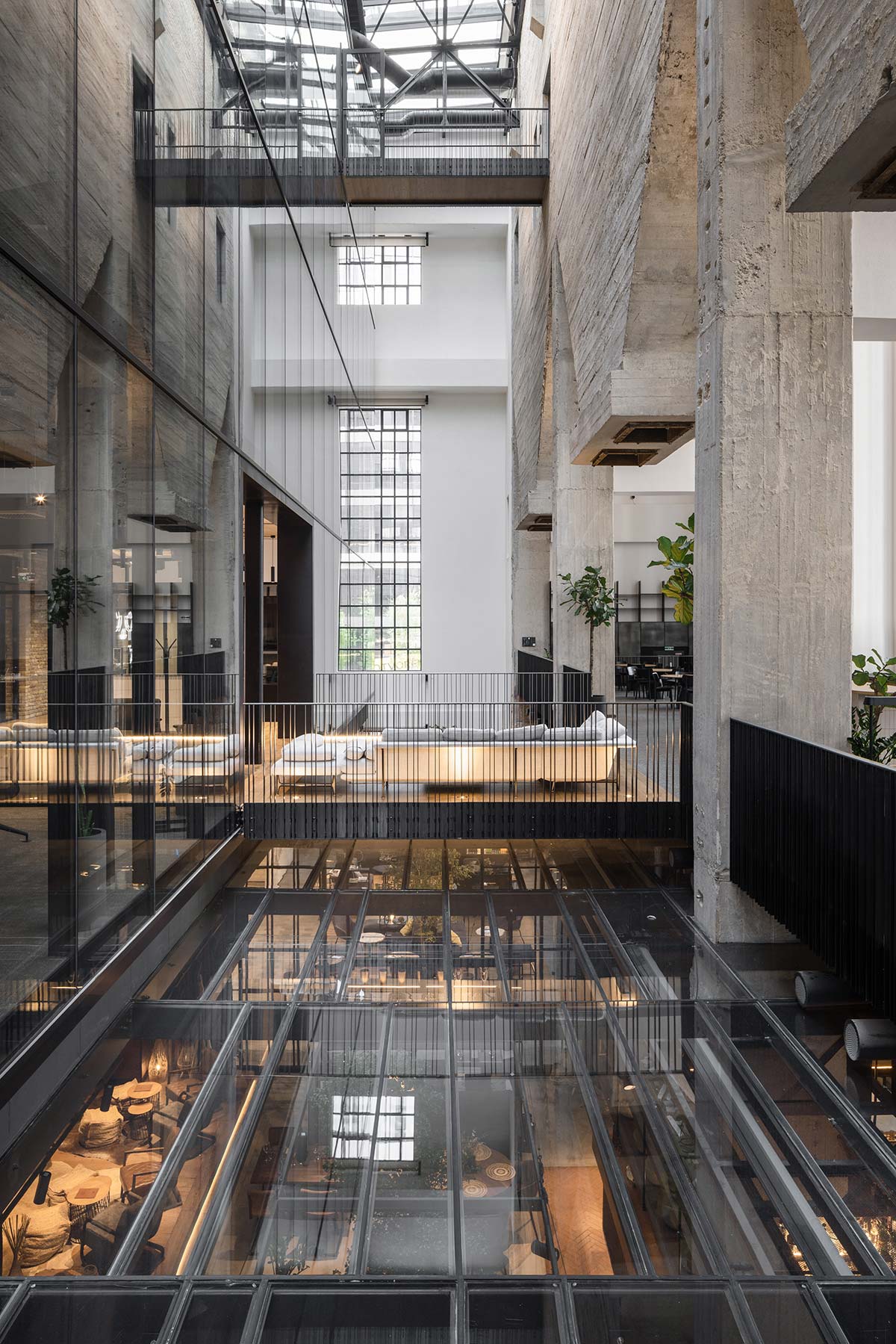
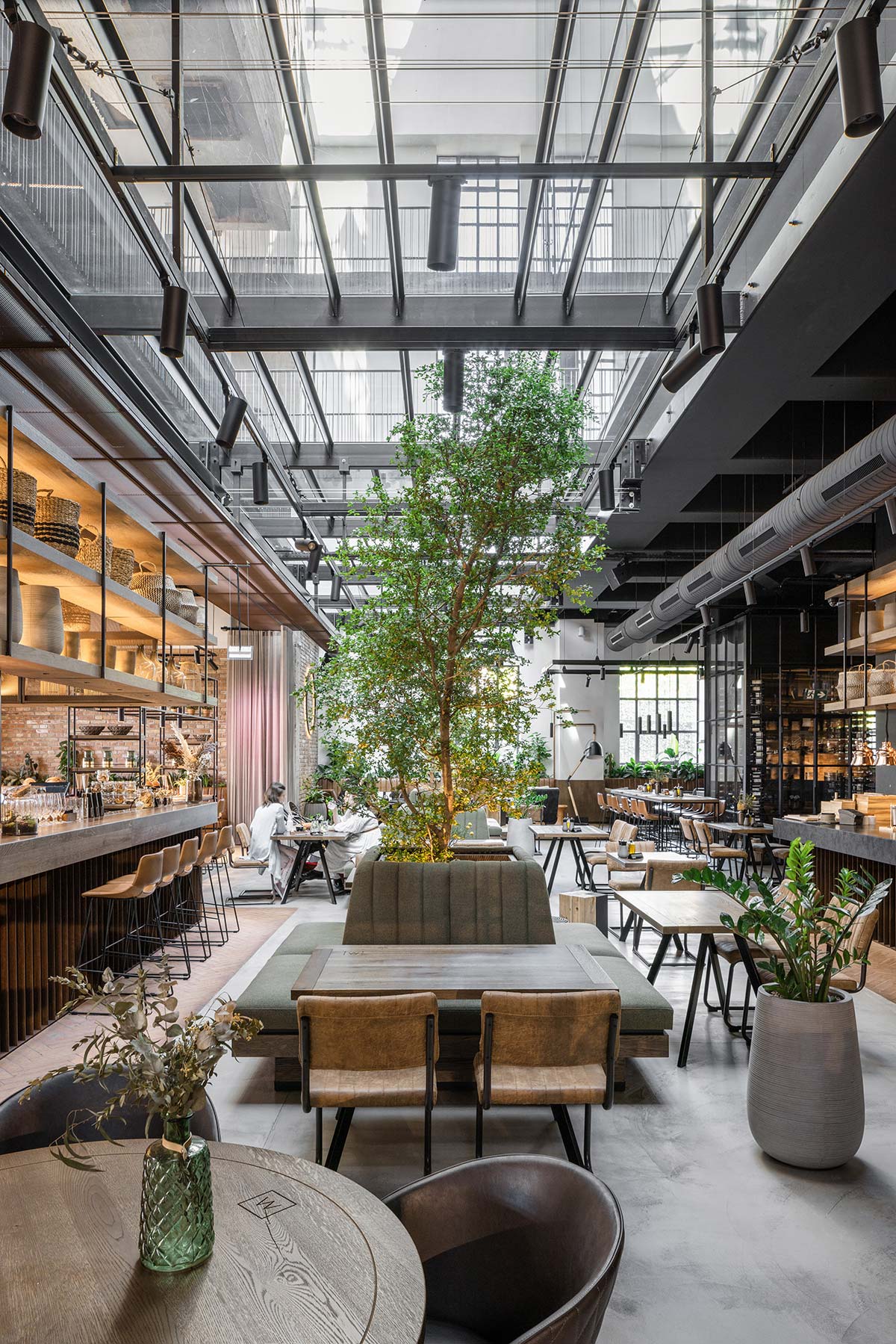
The furnishing pieces, such as tables, benches, stools, armchairs, and low tables, were designed to respond dynamically to guests’ needs. In the morning, a small breakfast area is separated by a curtain within the restaurant. The area can be used at lunch for work meetings and as a break area in the afternoons. Werk becomes a vibrant bar with live music in the evenings and weekends. The restaurant interior takes advantage of the former power plant’s fascinating layout, with open views over all its floors. Its atrium appears as if raised on a slab of glass.
It maintains elements of the architecture’s evocative heritage, such as the cement walls, large windows framed in steel, solid materials, and rough surfaces. Some sections of the floor feature unusual herringbone masonry. The bar counter is Cor-ten steel, and the kitchen island is stone.
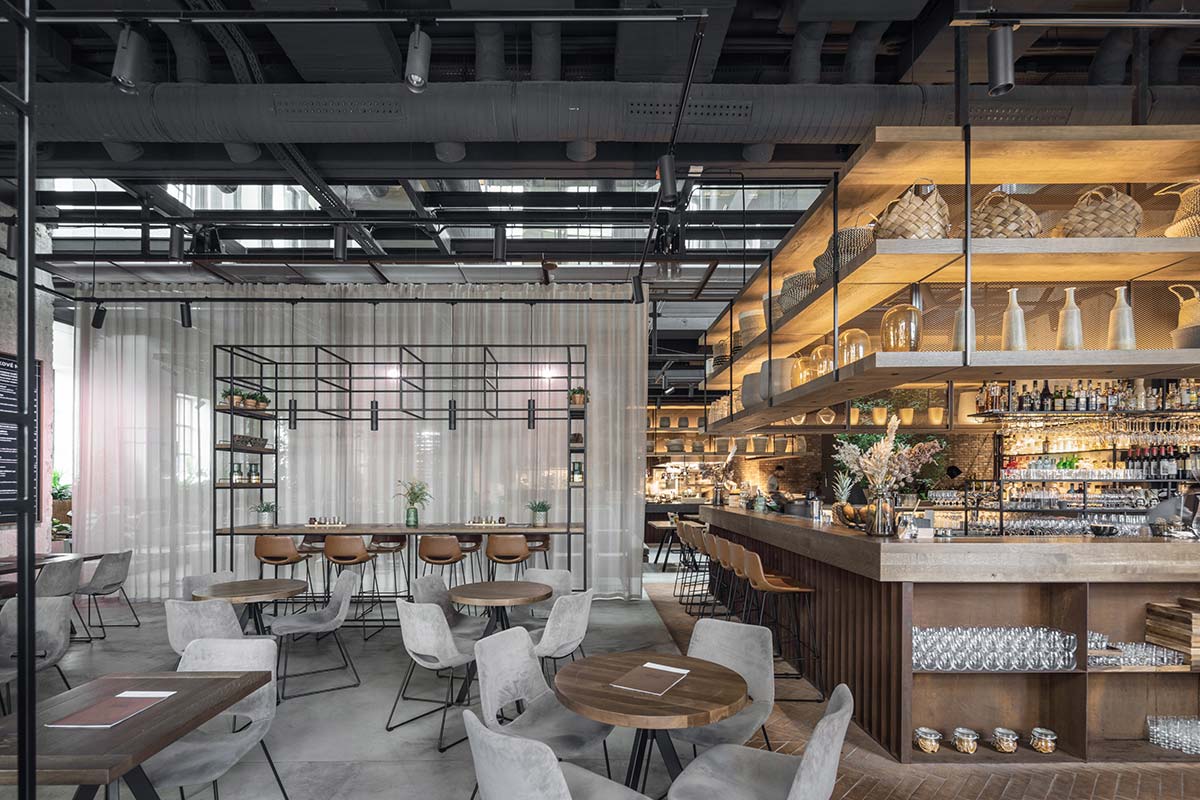
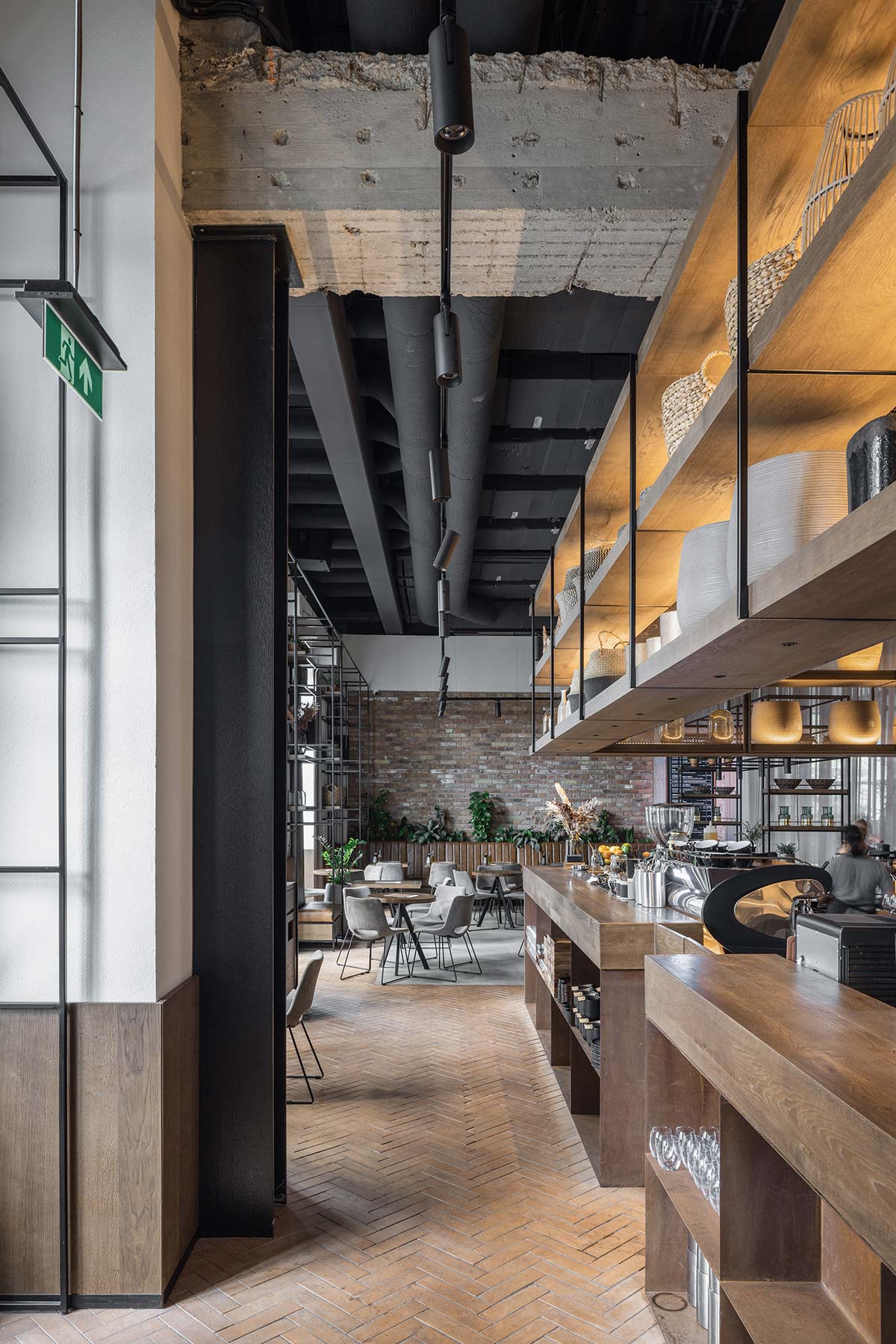
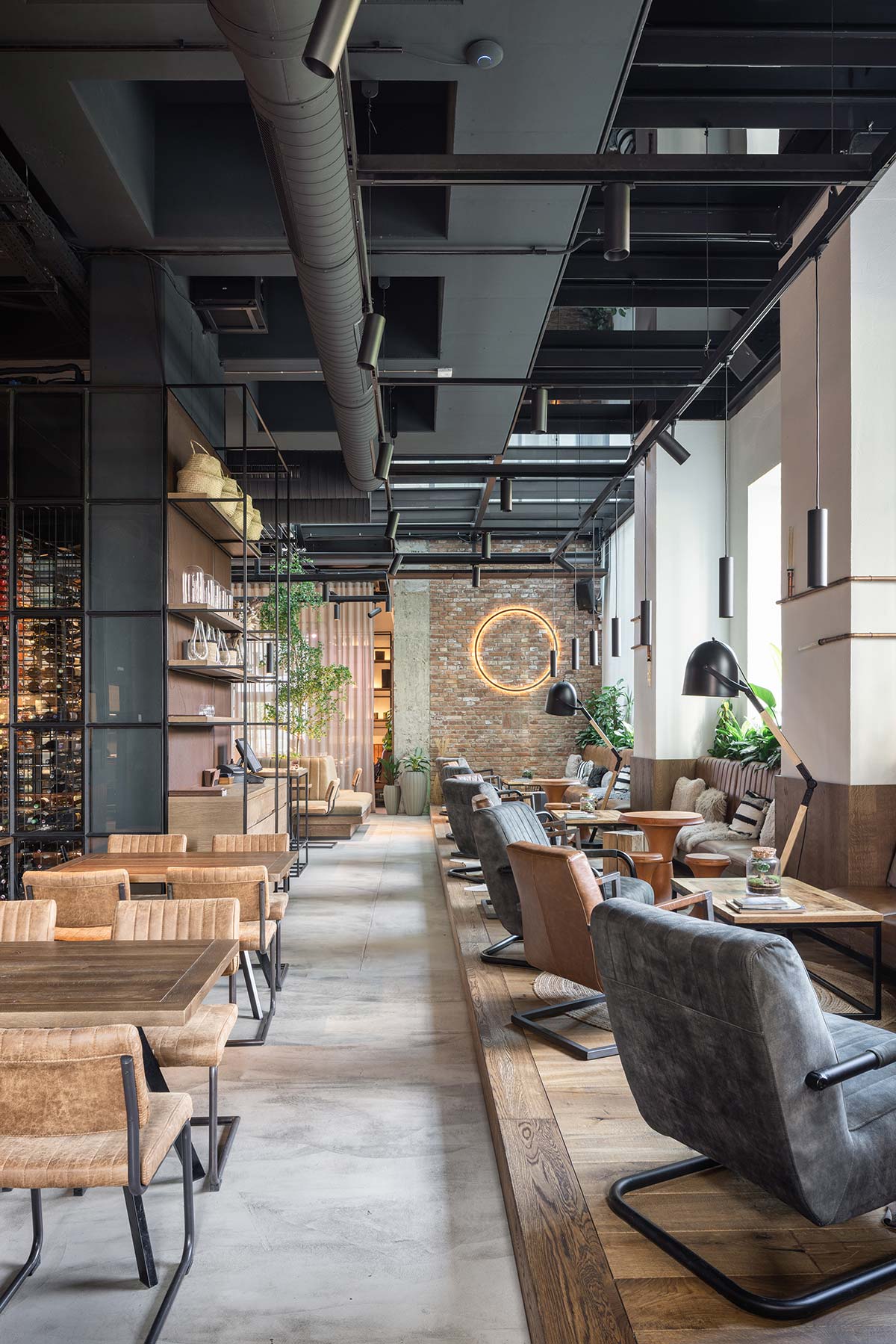
Materials also include oak wood, soft leather, and textiles that come into contact with patrons, and artificial materials are avoided. The materials all convey a sense of the appealing effect created by the passage of time. The lighting design is also a key element with textile shades that can adapt the interiors to different modes and atmospheres depending on the time of day.

